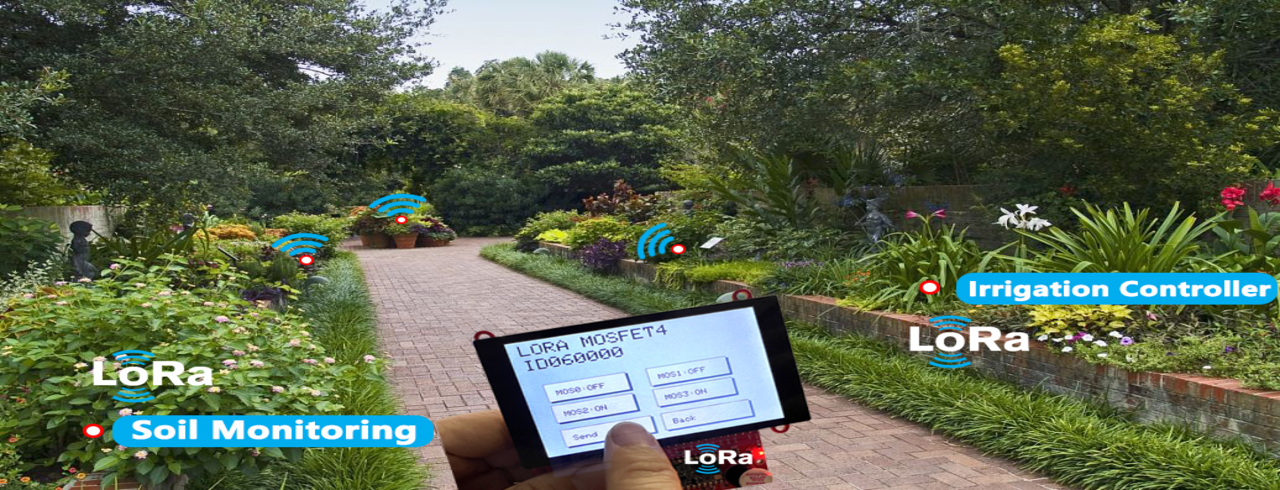In today's era of technology-driven solutions, efficient water management and conservation are critical for sustainability and environmental protection. The integration of LoRa (Long-Range Wide Area Network) technology into water monitoring systems has emerged as a game-changer, revolutionizing the way we manage our precious water resources.

Water scarcity, pollution, and inefficient water usage are global concerns that demand immediate attention. Traditional water monitoring systems often fall short in providing timely, accurate data needed to address these issues effectively. This is where LoRa technology steps in.
LoRa-enabled sensors are ingeniously crafted to deliver real-time data on a multitude of critical water parameters. From monitoring water quality to measuring water level and tracking water flow, these sensors operate seamlessly to provide a comprehensive view of water ecosystems. What sets LoRa apart is its ability to transmit this invaluable real-time data wirelessly, covering vast distances with unprecedented precision.
Imagine being able to instantly assess the quality of water in a remote reservoir or having up-to-the-minute data on river flow in challenging, inaccessible terrains. LoRa technology empowers water utilities and environmental agencies to do just that, revolutionizing the way we understand and manage our water resources.
One of LoRa's standout features is its impressive long-range capabilities. This means that no matter how remote or geographically challenging a location may be, LoRa technology ensures remote accessibility to essential water data. Water managers now have the remarkable capability to gather critical information from diverse geographical areas, even those previously considered unreachable.
Whether it's monitoring a remote mountain stream or keeping tabs on a reservoir nestled deep within a forest, LoRa's reach is unparalleled. This comprehensive monitoring capability allows for prompt responses to anomalies, ensuring the timely implementation of preventive and corrective measures.
Beyond its prowess in real-time data collection, LoRa technology introduces the exciting realm of predictive analytics. By harnessing the power of historical data, LoRa systems are capable of forecasting potential issues that could impact water resources. These forecasts extend to predicting leakages, identifying contamination events, and recognizing abnormal water consumption patterns.
Imagine having the ability to foresee a potential pipeline leakage or detect signs of water contamination before they escalate into crises. LoRa's predictive analytics empower water managers to take proactive measures, addressing challenges at their inception and mitigating their impact on water-related systems.
Traditional wired monitoring systems often come with substantial installation and maintenance costs. LoRa technology disrupts this paradigm with its wireless infrastructure. By eliminating the need for extensive cabling, LoRa significantly reduces operational expenses.
This cost-efficiency doesn't just benefit large-scale water utilities; it extends to water management entities of all sizes. LoRa's accessibility and affordability democratize advanced water monitoring, ensuring that even smaller organizations can embrace cutting-edge technology for the betterment of their water management practices.
In today's world, environmental sustainability is a non-negotiable imperative. LoRa technology aligns perfectly with these goals. Its low-power design minimizes energy consumption and reduces its environmental footprint. With extended battery life, LoRa devices require less frequent maintenance, resulting in a more eco-friendly approach to water monitoring.
As we march toward a greener, more sustainable future, LoRa stands as a beacon of hope. Its harmony with the principles of sustainability and environmental preservation makes it an invaluable tool in our quest to safeguard our most precious resource—water.
In the face of water scarcity challenges, the City of Shenzhen embarked on a transformative journey by integrating MinewSemi's innovative LoRa module, part of the MS21SF1 series, into its water monitoring system. The results were nothing short of remarkable:
l Real-time Precision: With the infusion of LoRa technology, the city gained the ability to swiftly respond to water quality concerns, ensuring the delivery of safe and pristine drinking water to its residents. The real-time data insights acted as a vigilant guardian of water quality.
l Reservoir Efficiency: LoRa's prowess in remote monitoring facilitated the efficient allocation of water resources by continuously overseeing reservoir levels. This dynamic approach guaranteed that water distribution remained streamlined, even in the face of ever-changing demands.
l Leakage Mitigation: Leveraging the capabilities of predictive analytics, the city managed to reduce water loss due to leaks by an impressive 20%. This proactive approach not only conserved a valuable resource but also saved significant costs associated with water wastage.
l Eco-friendly Investment: The savings realized from reduced maintenance and optimized water usage were thoughtfully reinvested in environmentally conscious initiatives. These efforts bolstered the city's commitment to conservation and sustainability, resulting in a win-win scenario for both residents and the environment.
The City of Shenzhen's successful implementation of LoRa technology serves as a compelling testament to the potential of cutting-edge solutions in addressing complex urban challenges. By embracing LoRa, the city not only ensured the availability of safe drinking water but also exhibited a commitment to responsible resource management and environmental preservation. This case study stands as an inspiring example of the transformative power of LoRa in enhancing water management practices, not only in Shenzhen but for urban areas worldwide.
As LoRa technology continues to evolve, its role in water management will expand. Improved sensors, enhanced data analytics, and seamless integration with IoT (Internet of Things) devices will further optimize water resource management and conservation.
The integration of LoRa technology into water monitoring systems represents a significant leap forward in the quest for sustainable water management. Real-time data, remote accessibility, predictive analytics, cost-efficiency, and environmental benefits make LoRa an invaluable tool in safeguarding our most precious resource.
As cities and regions worldwide embrace LoRa technology, they are not only improving water management but also contributing to a more sustainable and environmentally responsible future. With LoRa, we are better equipped to address the pressing water challenges of today and ensure a water-secure world for generations to come.